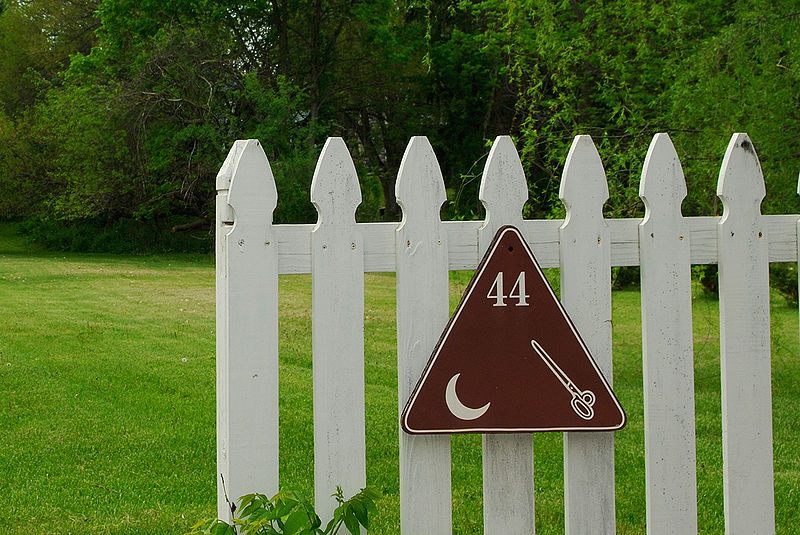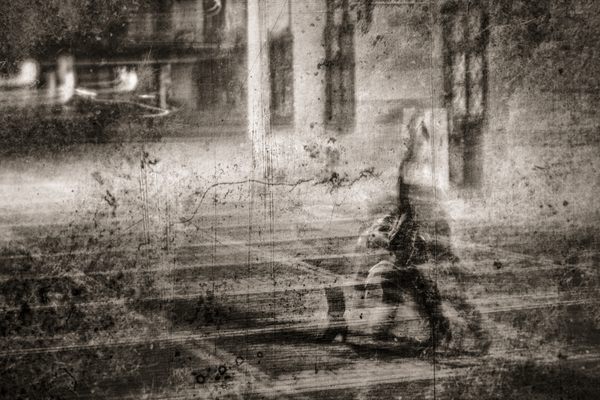The Ghost Story Behind a Bucolic Catholic Retreat Center
A brief, true history of West Virginia’s Priest Field and “The Legend of the Wizard Clip.”

While mysticism and Christianity often mingle, it’s decidedly not often that religious sites are founded on straight-up ghost stories. That’s what makes the pastoral center near Middleway, West Virginia, known as Priest Field, so fascinating. Priest Field, a 38-acre outreach and ecumenical center operated by the Diocese of Wheeling-Charleston, would not exist in the form it does today were it not for a centuries-old haunted house story known as “The Legend of the Wizard Clip.”
The origins of the bizarrely named “Wizard Clip” mystery go back to the late 1700s, when Virginia was still being settled, and before West Virginia had become its own state. The story begins with a man named Adam Livingston, a devout Lutheran who moved to the area in the early 1790s. According to The Mystery of the Wizard Clip, a published account from 1949 that is still sold at Priest Field, Livingston arrived there from Pennsylvania, where he had owned a great deal of land. For unknown reasons, his Pennsylvania property had begun experiencing a host of calamities, from his cattle dying off to his barn burning to the ground. Looking for a fresh start, Livingston and his family packed up and moved. But as it turned out, his troubles were only beginning.
“I don’t want to freak people out about the whole spiritual world,” says Susan Kersey, director of the Priest Field Pastoral Center. “Because some people believe, some people don’t believe.” Kersey says that she doesn’t talk about the Wizard Clip story much to visitors unless asked, though she is well versed in the stories surrounding Priest Field’s history.


The Livingston family resettled on 350 acres near what is now Middleway, where they were once again beset by unexplained misfortune. Again the livestock began to die, but now, Livingston and his wife and children also began to experience unsettling phenomena. Among the disturbances that supposedly visited the Livingstons were loud banging and the thunder of galloping horses, which would occur out of the blue; stones and pieces of firewood would be flung through the air; dishes and pottery would mysteriously come off the shelves and smash to the floor; and the heads of ducks and geese were said to simply fall off as though cut by some invisible force.
But the oddest phenomenon, and the one from which the legend takes its strange name, was the clipping and shredding of the Livingstons’ clothes. As the story goes, after the Livingstons moved in, bedding, shirts, boots, saddles, and pretty much any other piece of fabric or cloth began to be mysteriously cut to ribbons, or more commonly, have a crescent moon shape cut into them. “It would appear in their clothing, it would appear on the animals,” says Kersey.
As detailed in a series of historic accounts of the legend collected in the 1978 pamphlet Adam Livingston, the Wizard Clip, the Voice: An Historical Account, it didn’t matter where the cloth was—none of it escaped the clip. Items of clothing were somehow cut while people wore them; stored linens would be found clipped; pieces were clipped on the laundry line. One prominent account tells of a curious visitor to the Livingston house who took off her hat and wrapped it in a handkerchief to keep it from being clipped, but when she left and unwrapped it, the silk hat had been cut to narrow shreds. The term “Wizard Clip” seems to be in reference to the crescent moon as some kind of occult symbol.
The stories of the Livingston clippings became so widespread that the area that’s now Middleway was even sometimes just called “Wizard Clip” or “Cliptown.”

According to the accounts in the 1978 pamphlet, Livingston began looking to religion for a solution to his problems. He reached out to his Lutheran pastor, but was turned away after the minister argued that it was not in his power to banish the evil spirit in his house. After that, Livingston began broadening his spiritual search. He approached an Episcopal minister, and was visited but a Methodist preacher. He even entertained self-proclaimed conjurors, but reportedly, each person who tried to exorcise the presence was met with flying stones and other strangeness.
Just when Livingston was losing his faith in God altogether, he supposedly had a vision that would change his dreadful fate. “Finally, Adam Livingston had this dream where he saw a man in a long cloak-like type of thing,” says Kersey. Livingston came to the conclusion that this meant that he should seek out a Catholic priest for help. He finally found Reverend Dennis Cahill, and reluctantly invited the Catholic to his home. Supposedly, after Cahill uttered some prayers and sprinkled some holy water, not only did a thought-to-be-misplaced sum of money appear at Cahill’s feet as he was leaving, but the hauntings also ceased for a few days.
Another priest, Reverend Dimitri Gallitzin, also visited the Livingston residence around 1797. In a letter written in 1839, just a year before his death, Gallitzin declared that after three months of witnessing the disturbances at the Livingston home, “I was soon converted to a full belief of them.” Gallitzin had Cahill come back to the Livingstons’ and together they performed an exorcism that allegedly caused the house to shake with “the rattling and rumbling as of innumerable wagons.” Finally, after Cahill performed a mass in the house, the hauntings stopped. Well, sort of.
Following the exorcism, the Livingstons were later beset by a haunting of another kind. Adam Livingston and his family began hearing something they called The Voice. Cahill continued visiting the Livingstons to bring them into the Catholic fold, and found that the family now claimed to be being instructed by a strange voice that taught them about Catholicism and piety. The Voice was said to exclaim, “I want prayers!” and shame members of the family who were not pure in their confessions. It was under these unusual circumstances that Adam Livingston and a number of his children became devout Catholic converts.

In February of 1802, Livingston deeded a portion of his land to the Catholic Church in perpetuity, before moving back to Pennsylvania, where he lived until he died in 1820. In accordance with his gift, he stipulated that there should always be a member of clergy on the land, and that any profits from it should go toward building or repairing a church on the land.
Since many accounts of the Livingston hauntings and the Wizard Clip come from the writings of religious sources such as Gallitzin, the miraculous ability of the Catholic Church to banish the mysterious spirits may seem a bit convenient. Still, the legend itself continues be a prominent feature of the local culture to this day. In Middleway, triangular historic markers still bear a crescent moon and shears in opposite corners to honor the legend.
The land Livingston deeded, the Priest Field Pastoral Center, still belongs to the church. Today it is a peaceful retreat used by everyone from religious leaders to sewing clubs to AA groups. Kersey says that no further ghost stories have developed around the land. But then again, it’s never left the hands of the church either.








Follow us on Twitter to get the latest on the world's hidden wonders.
Like us on Facebook to get the latest on the world's hidden wonders.
Follow us on Twitter Like us on Facebook